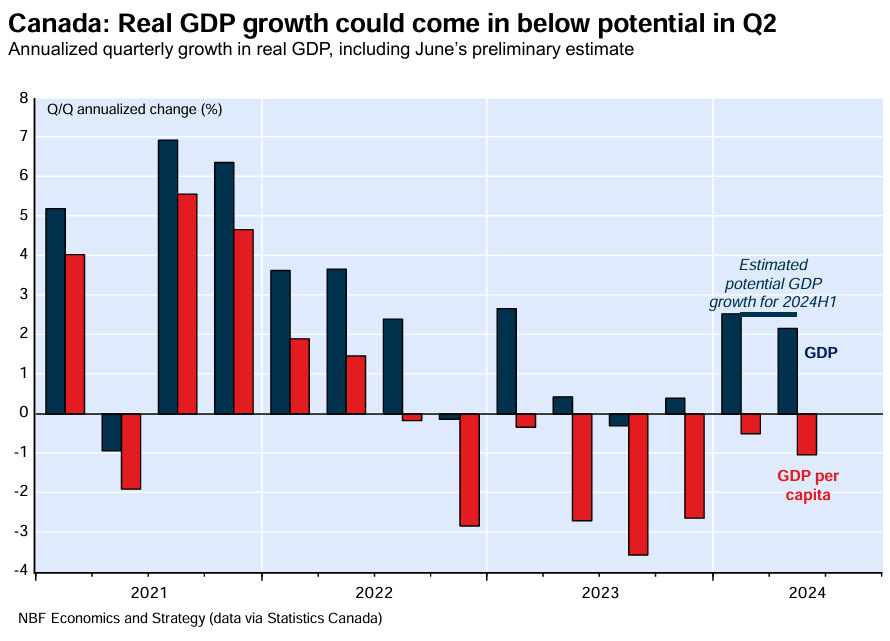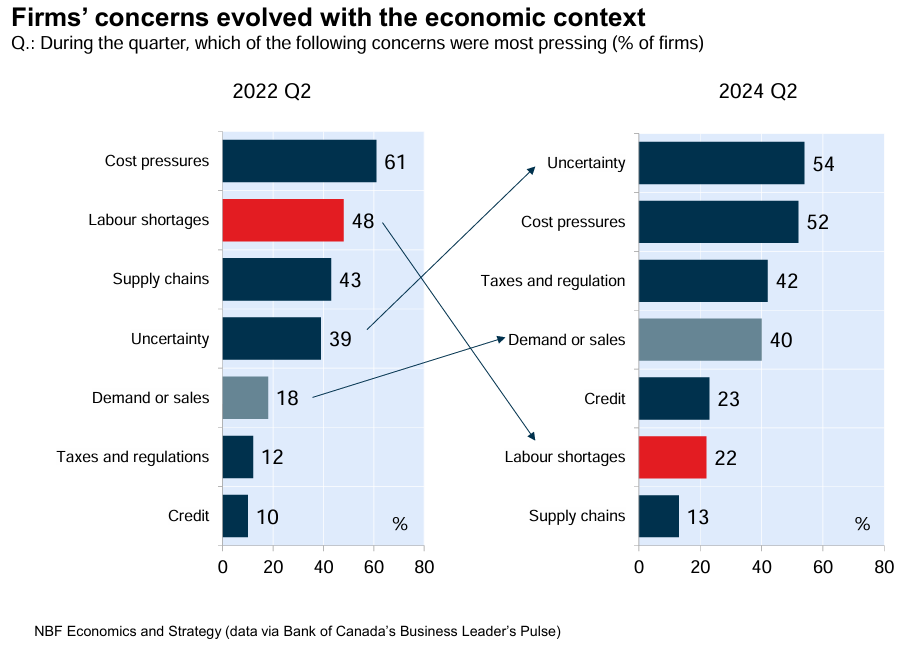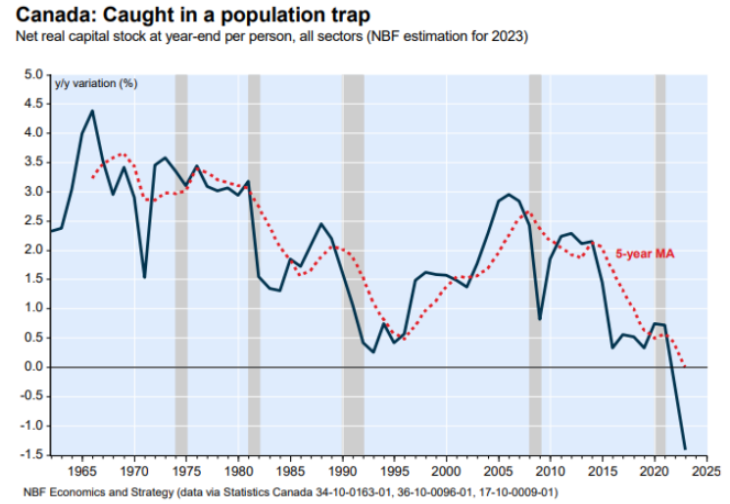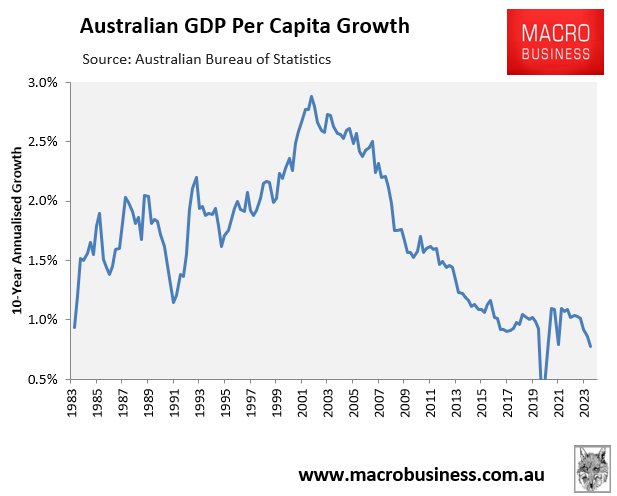The National Bank of Canada has released the following chart showing that annualised real per capita GDP growth in Canada has declined for eight consecutive quarters:

“Economic growth remains weak given the demographic boom”, note the economists at National Bank of Canada. “This trend is set to continue and GDP per capita might have declined for the 20th time in 24 months”.
“This is also reflected in job market data, which are set to deteriorate further, as most sectors look overstaffed”.

The sad reality is that Canada has experienced near zero growth in real per capita GDP over the past decade, in stark contrast to its neighbour to the south, the United States:

This is partly because Canada’s population has grown aggressively via net overseas migration, which has badly diluted the nation’s capital stock.

As a result, Canada’s population has grown much faster than business, infrastructure, and housing investment, resulting in “capital shallowing” and slower productivity growth:

Canada’s economic stagnation is projected to continue, with the Fraser Institute warning that the country’s standard of living is on track for its worst decline in 40 years.
Figure 10 presents the percentage decline in real GDP per person from the high-point to the low point, again extending the period from Q2 2019 to Q4 2023. In addition to being among the longest periods, it also has among the largest decreases in real GDP per person at 3.0%.

While the decline from Q2 2019 to Q4 2023 is still less than the declines from Q2 1989 to Q2 1992 and Q3 2008 to Q2 2009, it remains double that of all other periods. And again, as of Q4 2023 the decline is still ongoing and may deepen further…
This represents one of the longest and deepest declines in real GDP per person since 1985, exceeded in both respects only by the decline and recovery that occurred from Q2 1989 to Q3 1994.
However, the decline in incomes since Q2 2019 is ongoing, and may still exceed the downturn of the late-1980s and early-1990s in length and depth of decline.
While less extreme, Australia is also experiencing a long-lasting decline in real per capita GDP.
Australia’s per capita GDP has already declined for five consecutive quarters and will record another decline when the Q2 national accounts are released early next month.

While not the deepest per capita recession, it would be the longest in records dating back to the early 1970s.
Australia’s trend per capita GDP growth has been in terminal decline ever since the federal government more than doubled net overseas migration in the mid-2000s:

Like Canada, Australia has experienced pervasive “capital shallowing” and declining productivity growth because the nation’s population has grown faster than business, infrastructure, and housing investment:

Both countries must break free from lazy immigration-driven growth and build long-term, productive economies that serve existing residents rather than oligopolistic corporations.
Otherwise, Canada and Australia will remain stuck in “population traps” with diminishing productivity, continuous housing shortages, and never-ending per capita recessions.

